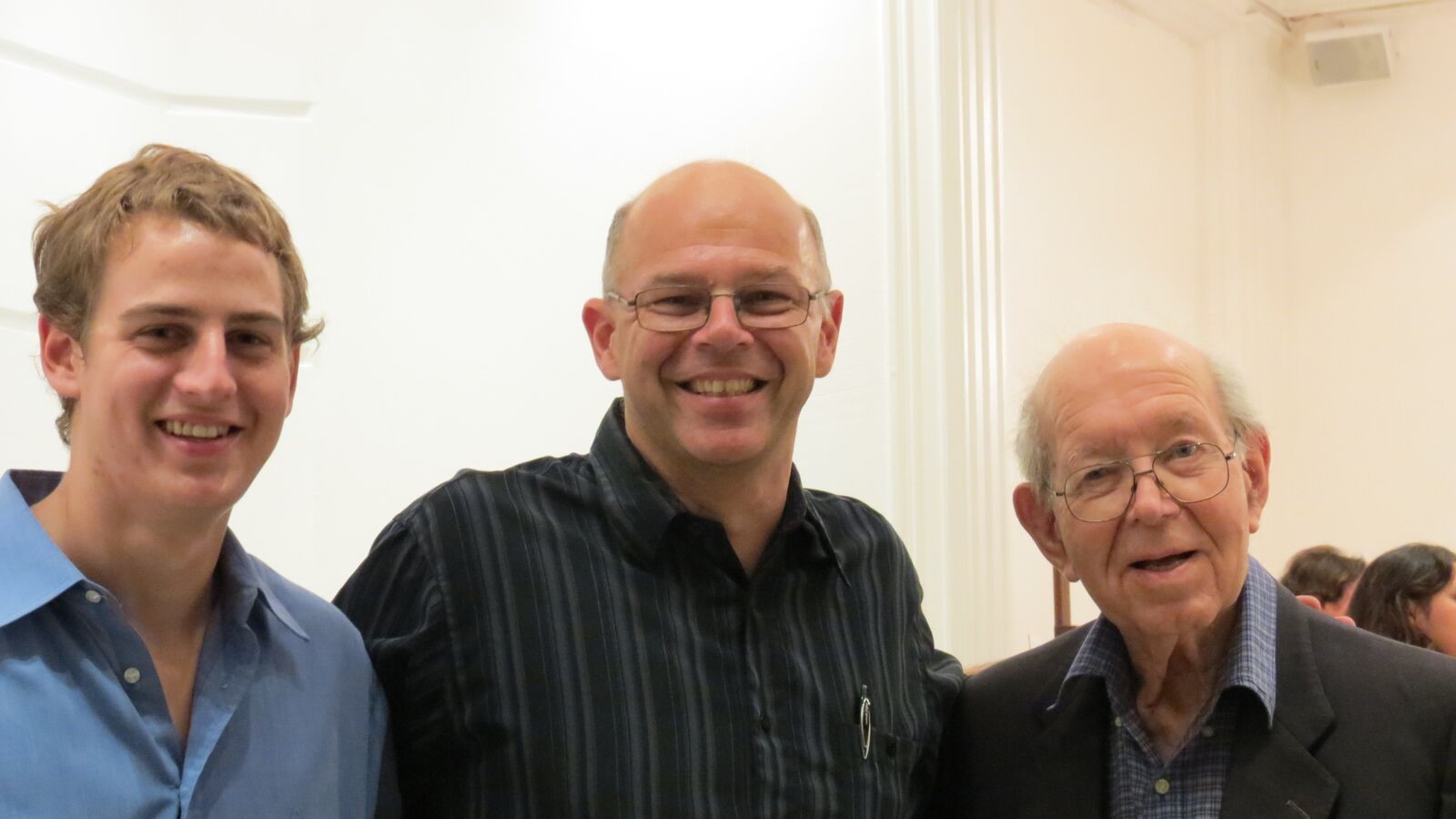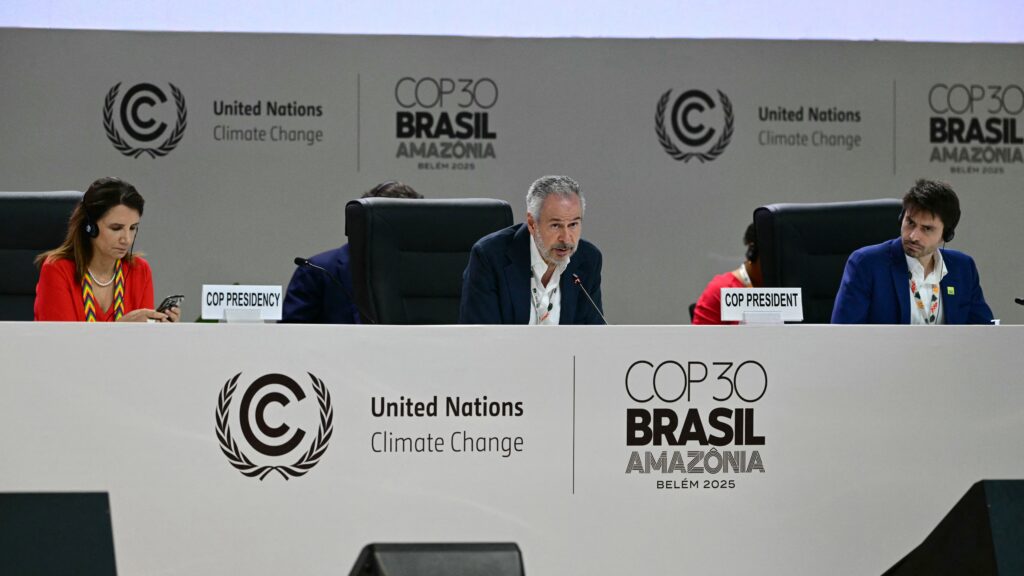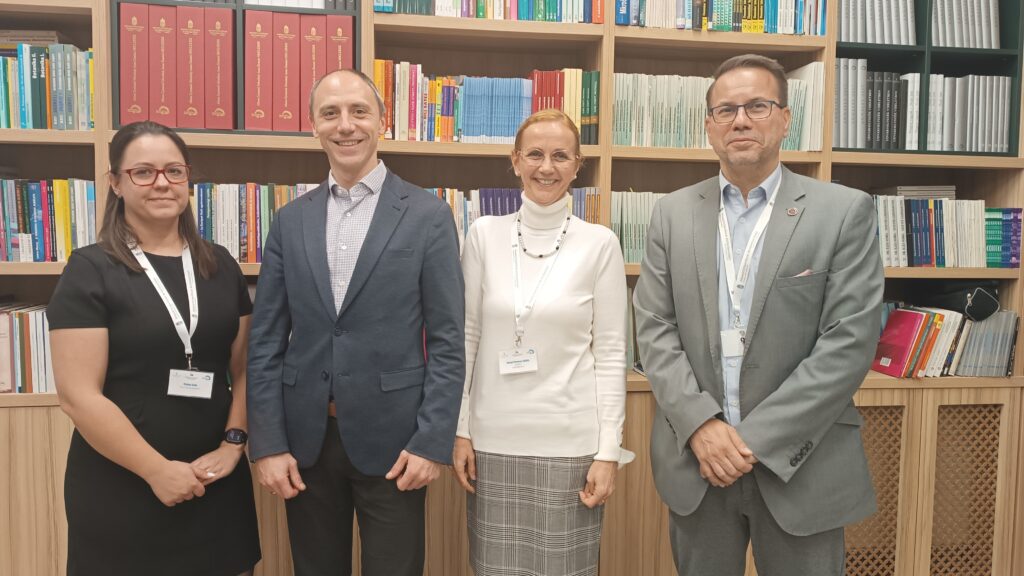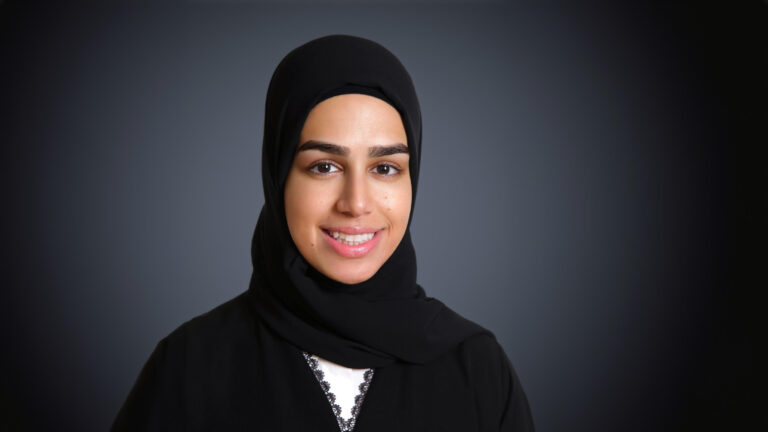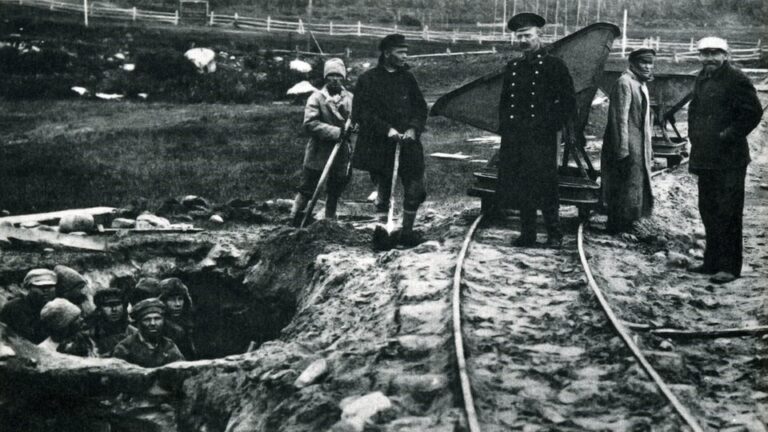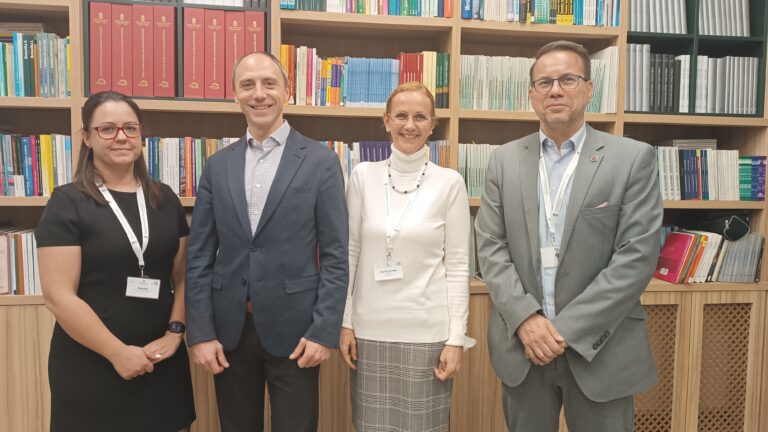Mátyás Lomniczy is a second-generation Hungarian born in Argentina. His parents emigrated in 1948 and ran the weekend Hungarian school and the Zrínyi Youth Circle in Buenos Aires for nearly 25 years. He attended a German school and now speaks four languages fluently, as do his three children. He taught at the Hungarian weekend school for several years and currently serves as the district scout commander and a board member of the Hungária Association.
***
You were born in Argentina as a second-generation Hungarian. Tell us about your family.
My parents, József Lomniczy and Paula Pejacsevich—born in Eszék (today Osijek, Croatia)—emigrated from Hungary to Argentina in 1948 and married there in 1956. I have two sisters, Paulette and Alexandra; one lives here, the other moved to Germany. I studied engineering and worked in that field for many years. My father had a home furnishing business that I took over 20 years ago and now run together with my current wife, who is an interior designer. With my first wife, Alexandra—who passed away last year of cancer—we had three children and divorced 20 years ago. Our 35-year-old daughter, Melinda, works as a psychologist at a German school. Our 32-year-old son, Attila, runs a Korean restaurant in Buenos Aires with his Korean girlfriend. Our 30-year-old daughter, Mikaela, lives in Barcelona, works for an ophthalmologist, and is pursuing an acting career. My second wife, Zsuzsi Kokron, grew up in Brazil and moved to Argentina ten years ago. I met both of my wives through Hungarian scouting, which is very close to my heart. I’m the commander of the South American district, which includes two troops in Argentina and one in Brazil.
Your parents led the Hungarian weekend school for many years. Why did they volunteer for it?
The Zrínyi Youth Circle and the weekend Hungarian school were founded by a Hungarian nun, Máter Juhász Mária. My parents took over the school in the 60s with the Benedek couple—László and Marika—and they ran it together for 20–25 years, about 15 of which it operated in our home: every Sunday, my room became a classroom. Later, it moved to the Hungarian House, where nowadays Hungarian scouting, a Hungarian restaurant, and a cultural center operate. Why did they do it? For the intellectual émigrés who fled communism in two distinct waves, either between 1945 and 1948 or in 1956, preserving Hungarian identity was extremely important, especially during the communist rule in Hungary. I was raised with the mindset that we must do abroad what cannot be done in Hungary. This mindset remained important even after the Hungarian regime change of 1989–90. For example, we still hold 56 commemorations every 23 October; we still run the Hungarian weekend school and the scout programs—these two were the most obvious means of maintaining the Hungarian identity and community outside of Hungary. It’s also crucial to raise children as Hungarians within the family—my parents did that for me; I grew up in a ‘little Hungary’—and I did the same with my children.
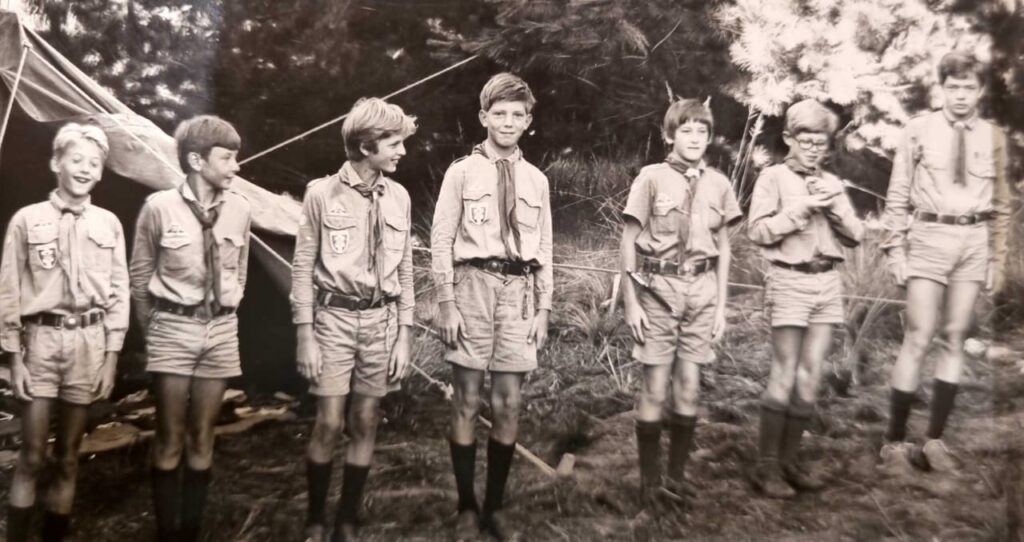
When people asked me whether I’m Hungarian or Argentine, I used to say: ‘I’m 50 per cent Hungarian and 50 per cent Argentine’—until I heard someone saying they were 100 per cent of both. Since then, that’s what I do, too. This is truly a dual identity; it’s wonderful and enriching, and you don’t have to choose which one is more important or better. For me, both are equally important; I value and love them both. Moreover, my parents emphasized learning as many languages as possible: they sent me to a German school, and I did the same with my kids. Thus, we all speak German, English, Spanish, and Hungarian fluently. This is a huge gift I received from my parents and passed on to my children. They are proud of their Hungarian heritage, though they mostly identify as Argentine. But if they have children, they’d be happy to speak to them in Hungarian.
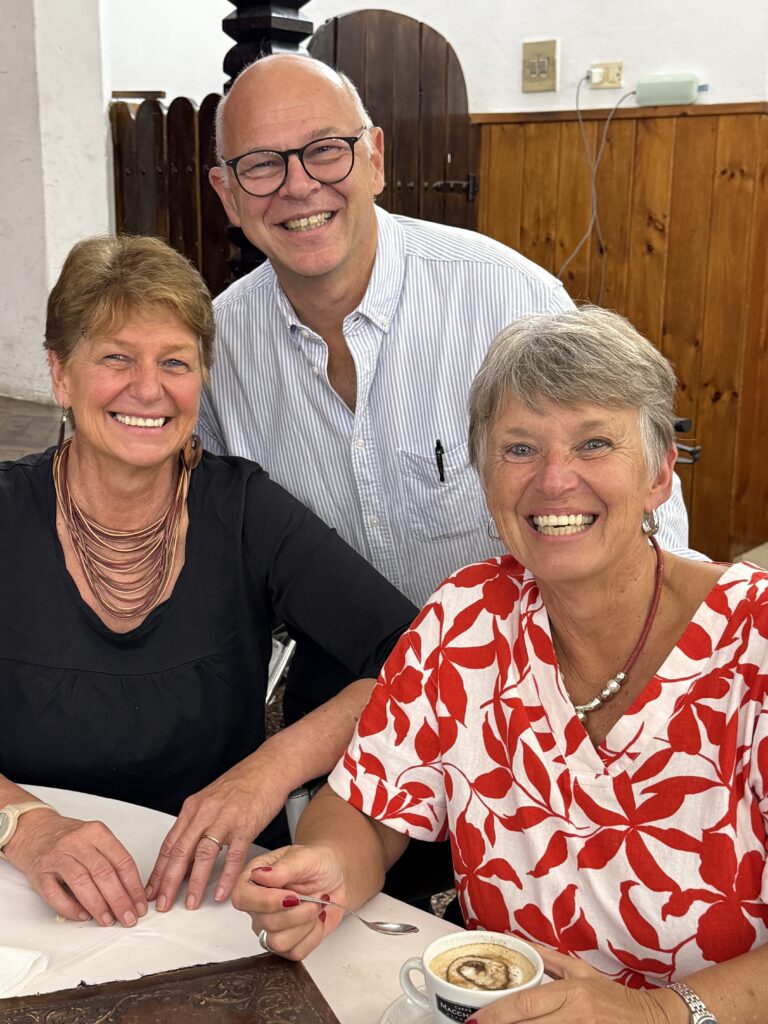
How has the Hungarian community in Argentina changed over recent decades?
In the past, there were tens of thousands of us, and many more institutions—e.g., five or six Hungarian Houses and five scout troops. Today, there’s only one Hungarian House and two scout troops. The number of people with Hungarian descent is growing in absolute terms, even though many have moved away. However, since no new immigrants have arrived lately—perhaps just two or three families—the Hungarian community here is mostly second-, third-, or later-generation. Fewer and fewer people speak Hungarian, and even those who do often speak a version that has diverged from the one spoken in Hungary nowadays, since the language has been passed down orally. In the Hungarian Scout Association in Exteris (KMCSSZ), knowledge of Hungarian is required, but we had to give up that rule—otherwise, no one would come. Activities are in Hungarian, but we use Spanish in training, and children tend to speak Spanish among themselves. Sociologists say that immigrant communities typically assimilate after 50 years. Ours is over 75 years old and still flourishing; our community life is very active: we host balls, fairs, lunches, and concerts. Assimilation is inevitable, but we try to slow it down as much as we can. We have several institutions with dedicated leaders and an umbrella organization, the Federation of Hungarian Institutions in Argentina, coordinating local Hungarian events to avoid scheduling conflicts. At our last meeting, 70 people attended, which is a strong turnout. The current president, Zsuzsi Benedek, is a Hungarian language teacher; her textbooks are widely used. She has four children and several grandchildren, all living in Europe. There’s also a Latin American Federation of Hungarian Institutions, which includes groups from Peru and Chile.
Let’s briefly look at the Hungarian organizations. Let’s please start (or rather continue) with scouting.
We are part of the KMCSSZ’s South American District No. 2. There are two troops in Argentina: the Boy Scout Troop Bartók Béla Troop No. 18 is led by Commander Bernát Gröber, and the Girl Scout Troop Magyarok Nagyasszonya No. 39 is headed by Inés Arcagni. They include about 40–50 young people, and this number has remained stable in the past 10–15 years, which is excellent. We regularly train patrol leaders, and in January 2026, we’re planning a new Assistant Leader Camp—that hasn’t been held in Argentina for nearly a decade. Since we are small in number, we typically send our youth to North American or European leadership training camps. Our troop leadership is very enthusiastic; for example, we organized the last two raft hikes on the River Tisza (Tiszai Tutajtúra), together with Hungarian scouts from the Carpathian Basin, e.g., Hungary, Transylvania, Slovakia—we’re extremely proud of that.
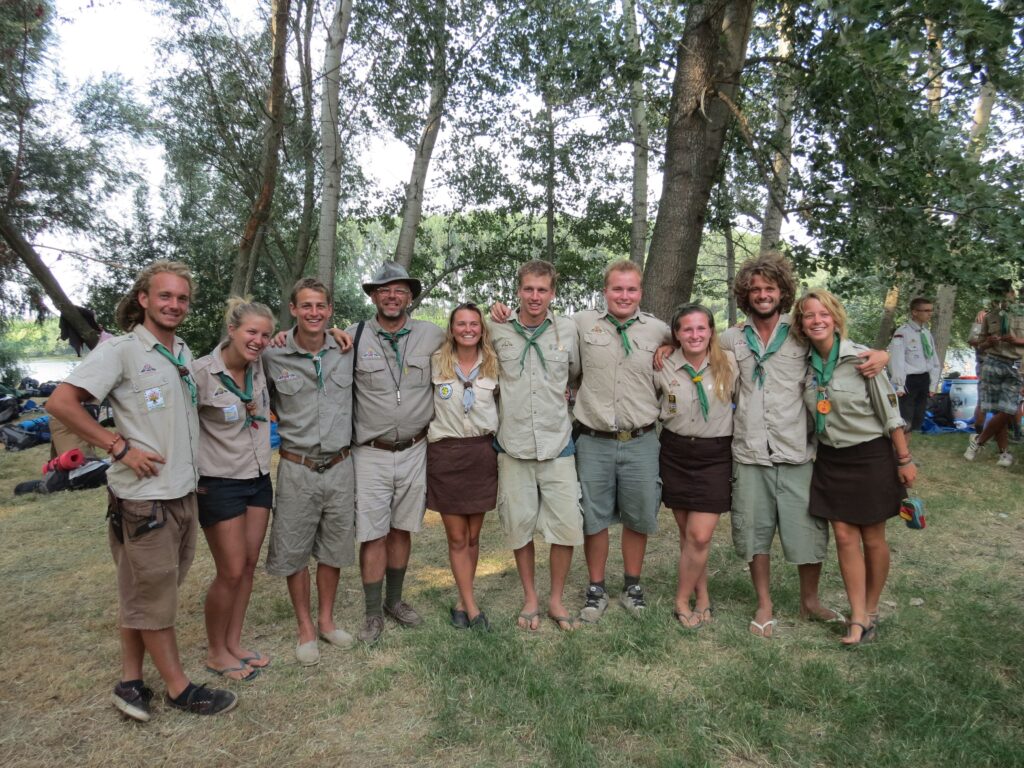
In Brazil, there is only one troop, the Scout Troop György Szondy No. 13, led recently by Gusztáv Dénes. Although slightly more people of Hungarian descent live there, organizationally, they’re doing a bit worse than we are. They have around 25–30 scouts and only two–three leaders. Many young people of Hungarian descent immigrate from here to the U.S. or Europe, but even more do so from Brazil. A few years ago, I compiled a list of how many potential leaders left—and I found that far more left than stayed.
How do you differ from other district scout groups within the KMCSSZ?
North American and European scouts within the KMCSSZ really like us—they often invite our leaders to train at their leadership training camps, because we create such a cheerful atmosphere. This year, too, both of our commanders are going to the Fillmore, New York, summer camp as trainers. We’re loud, joyful, and love to party, but the raft hikes showed we’re also brave and capable organizers. Our leadership is a colorful and interesting mixture of Latin American, Italian, Spanish, Argentine, and Hungarian identities. We have a saying: ‘There is no impossible, only ineffectual.’
We don’t have new immigrants, but we have plenty of visitors—so for instance, our most recent Jubilee Scout Camp (‘Jubi’) was a fantastic experience. The South American version of the Jubi, which is held every five years on all four continents by KMCSSZ, takes turns between Brazil and Argentina. This past January—half a year after the North American Jubi Camp of last summer—we organized our South American Jubi. We invited not only Argentine and Brazilian Hungarian scouts, but a lot of others, and to our surprise, 180 participated, half of whom were from other continents, which enriched our experience. Many combined the camp with family visits or tourism, like trips to Machu Picchu or the Iguazu Falls.
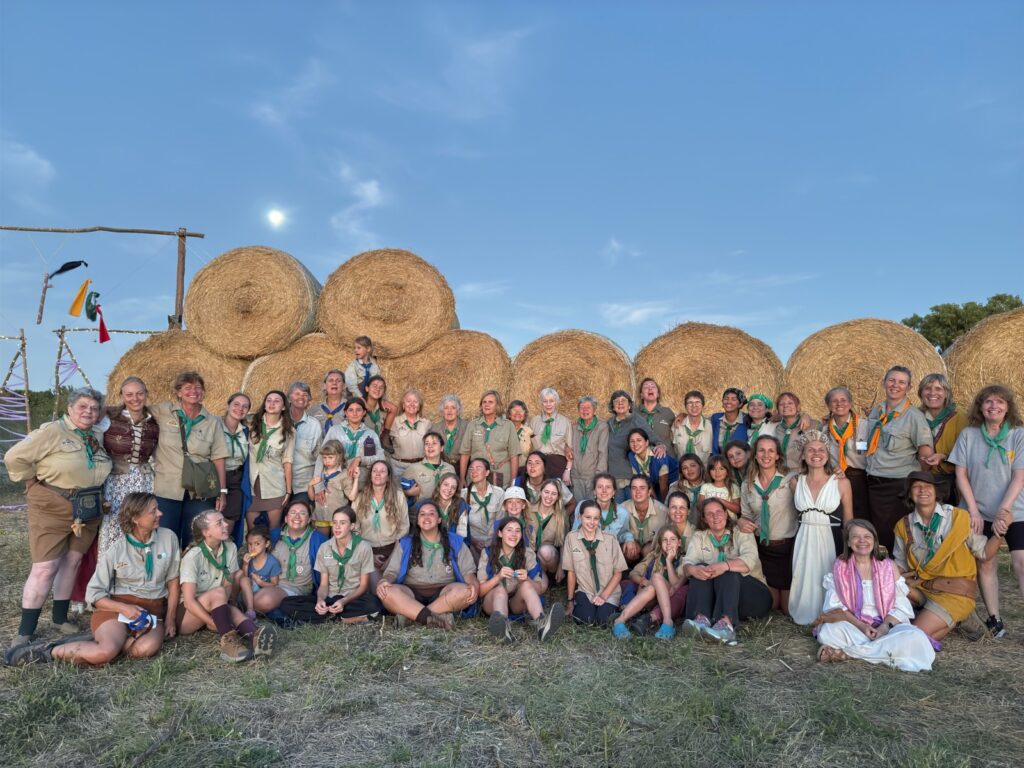
Is your Jubi Camp similar to others, or are there differences?
It follows the same structure—ten days built around a framework story, this year themed around the era of Rákóczi. But unlike camps set in the mountains and in a built campsite, e.g., like the one in Fillmore, New York, this year we camped near the Río de la Plata and on an Argentine Hungarian family’s ranch in Uruguay, in a beautiful wild forest with no buildings, electricity, bathrooms, or kitchen. Providing for approximately 180 people wasn’t easy—yet there were no complaints; everyone enjoyed it tremendously. We had to cross the river by boat, then continue by bus—which was a big logistical challenge, and customs officers were surprised to see lots of tents, sleeping bags, and 16 axes on the conveyor, but eventually shrugged and let us go—they could see we weren’t smugglers…We had to build everything from scratch—we organized it for a year: the tools, the temporary buildings, the cooking, the programs—and dismantled it afterwards as if we were never there. As the founder of scouting, Baden‑Powell said: ‘We must leave things better than we found them.’
Every scout camp is different, and I’ve led many, and the greatest reward is always the feedback. When kids say: ‘This was the best camp of my life’, when they talk about their experiences in nature, how great the bathing spot was, when cooking is with open fire instead of gas, the beauty of starry nights and campfires, how they survived without bathrooms or how amazing it was those ten days without their phones—these are priceless moments. Scouting has so much magic and lifelong value. I especially love the patrol leader camps, where we teach 14–15‑year‑olds leadership, organization, motivation, and planning.
These skills go far beyond scouting. You mentioned bilingual scout activities. How do you handle that in a camp?
The default language is Hungarian, but if needed, we use English—because Spanish-speaking Argentines and Portuguese-speaking Brazilians cannot understand each other either. This year, of the 180 participants, 170 understood and spoke Hungarian well; only about ten struggled. Our bigger challenges are in leadership training camps. Two years ago, we organized one for 18 candidates—six from Brazil and 12 from Argentina—and we had to deliver sessions in two and later in three language groups, as some understood very little Hungarian. We’ve just begun organizing the assistant leader camp and are considering using a technical solution to provide automatic translation during presentations.
Let’s move to the weekend Hungarian school, which your parents led and where you also taught. How much overlap is there with scouting?
In principle, it is mandatory to participate in both, so about 90 per cent of the children do both. On Saturdays from 10am to 1pm, they attend Hungarian school in a school building about 100 meters from the Hungarian House. Afterwards, they walk over, eat lunch together, raise the flag, and participate in scouting until 5pm. Many then stay from 6pm to 8pm for folk dancing as well, and some remain even after that—we could say they spend an entire Saturday in the Hungarian community.
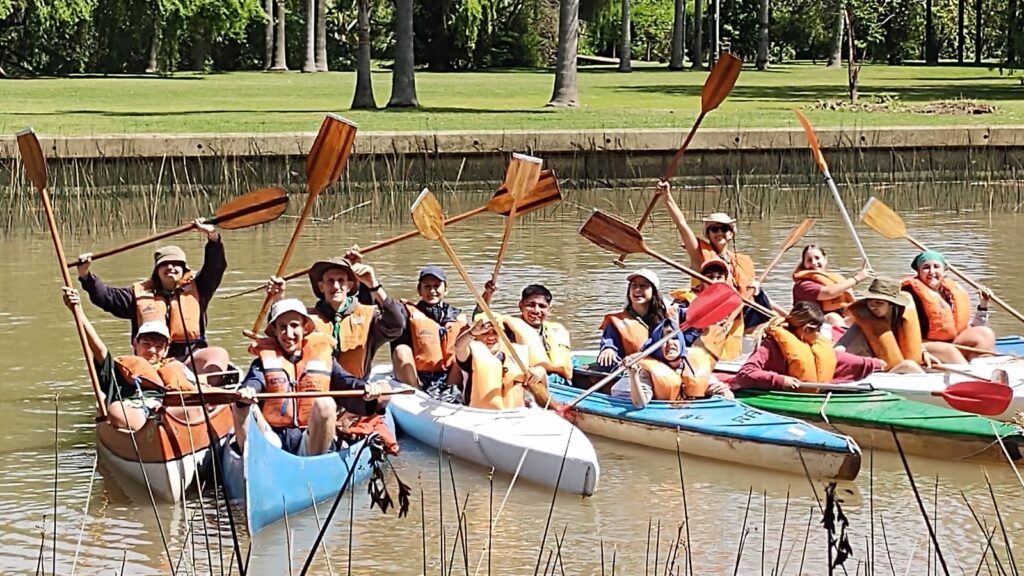
In the school, the children are divided into groups named after fruits, and they also prepare for Hungarian-knowledge exams needed for scout camps. There’s a small preschool group, which is very important. When I attended, there were history, geography, literature, general knowledge, etc., lessons; today, the emphasis is more on language teaching. It’s impossible to learn Hungarian in three–four hours a week, so our main goal is for children to join the community as early as preschool and live in Hungary for a few months around age 12–13, because they only have a real chance to learn the language there. We have a high school scholarship program from December to February, which is summer here, where participants live with families in Hungary and attend local schools. Those who make the effort can learn Hungarian quite well—many who stuttered before started speaking fluently after three months. After graduation, we encourage everyone to apply for the one‑year Balassi scholarship. Sadly, about one‑third of these scholars stay in Hungary permanently—something the Hungarian government is happy about; we are less so…
You mentioned vibrant folk dance life too.
The Regős folk-dance ensemble members are at least as active and enthusiastic as the scouts. Besides the adult group, there’s a youth group, the Tilinkók. The older ones rehearse Friday evenings, the younger ones on Saturdays. For nearly 40 years, every other year, they’ve organized the South American folk-dance meeting, alternating among Brazil, Argentina, and Uruguay. In the past, Venezuela also participated, but not anymore. At these events, at least seven or eight dance groups perform; and at the grand finale, you might see 200 children and adults dancing on stage. There’s also a one-week teaching workshop, the 50–70‑member Symposium, attended by professional musicians and folk dance instructors from Hungary. In Brazil, scouting is struggling, but the Pántlika dance group is flourishing. In Uruguay, there’s no scouting—they’d like it, but would need at least one or two Hungarian-speaking leaders for it, which they don’t have—but Hungarian folk dance is strong there, too.
You mentioned some people stay in the Hungarian House after dancing. Why? And what should we know about the Hungária Association?
About 30–40 years ago, we reserved a youth room in the Hungarian House, where young people can hang out on Saturday evenings. Every two or three months, there’s a small scandal—occasionally, neighbors complain, but that’s part of it.
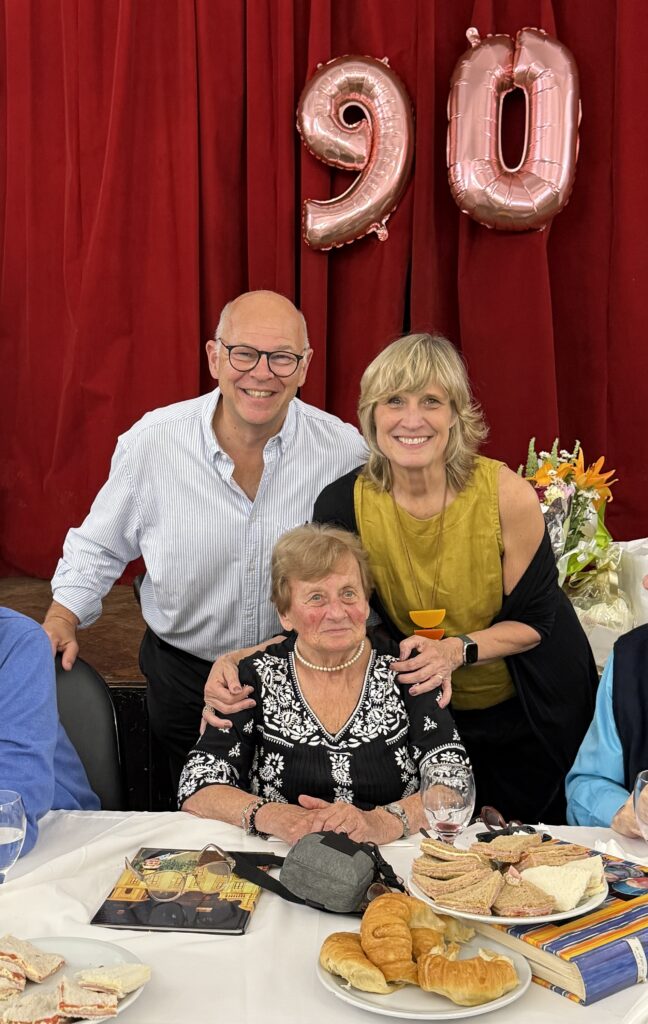
The Hungária Association is currently led by Magdi Paál, along with a full board. It basically acts as a hub, anchored by a Croatian-owned, very good restaurant that’s open Wednesday to Sunday, serving partly Hungarian dishes and hosting events. Many cultural events are held there; they often bring musicians and various cultural performances from Hungary. There’s also a vibrant sports life: fencing operates under the same name, Hungária, although by now it’s largely run by very few Hungarians. Also, as in most diaspora communities, there’s a Hungarian senior home with about 40 residents, only six of whom are Hungarian nowadays—including my mother—the rest are not Hungarians, but Hungarian people are given admission priority. If only Hungarians lived there, it wouldn’t be viable. Similarly, if only Hungarians frequented the restaurant or the fencing club, those too wouldn’t be sustainable. As I mentioned, even Hungarian scouting here isn’t sustainable by only Hungarians alone.
The restaurant must generate steady revenue. Why is it owned by a Croatian?
Yes—it basically covers the costs of the Hungária Association and the Hungarian House. Its history is interesting: in the past, it was always run by Hungarian uncles who cooked excellent goulash and bean soup but had little clue about modern restaurant management and eventually went bankrupt. Then came the next Hungarian uncle. This happened multiple times, and when the last Hungarian cook passed, the Afro‑Argentine waiter—Omar Gimenez, nicknamed Zoli by us—said: ‘If you teach my wife Hungarian cooking, I’ll take over.’ For 30 years, the restaurant flourished under his management; there was always a line to get in. Five years ago, Omar retired and we leased it on a commercial basis to a young man of Croatian descent who also owns other restaurants. It’s still going very well: half of the menu consists of Hungarian dishes—paprikás chicken, goulash soup, pörkölt, lángos, etc. On Fridays and Saturdays, no one gets a table without a reservation.
Many people leave Argentina, but your family hasn’t. Why?
Argentina’s economy has always been complicated; we’ve lived under inflation for 70 years…Right now, we have a president trying to fix it, but irrespective of daily politics, many young people immigrate. On the other hand, there are also many great things here that keep people—including me and my family—here: we’re far from wars; the climate couldn’t be better—15 °C with sunshine even in mid‑winter; and Argentina offers countless tourist attractions. I think it’s good to live here. If all my children moved away, I might reconsider—but for now, I plan to keep working here for another ten years, and instead of immigrating, I’ll travel one or two months each year to visit wherever my children and grandchildren are living. I’m so used to Argentina—everything I have is here—I wouldn’t want to leave. I may complain a lot, but I also love this country.
Read more Diaspora interviews:

